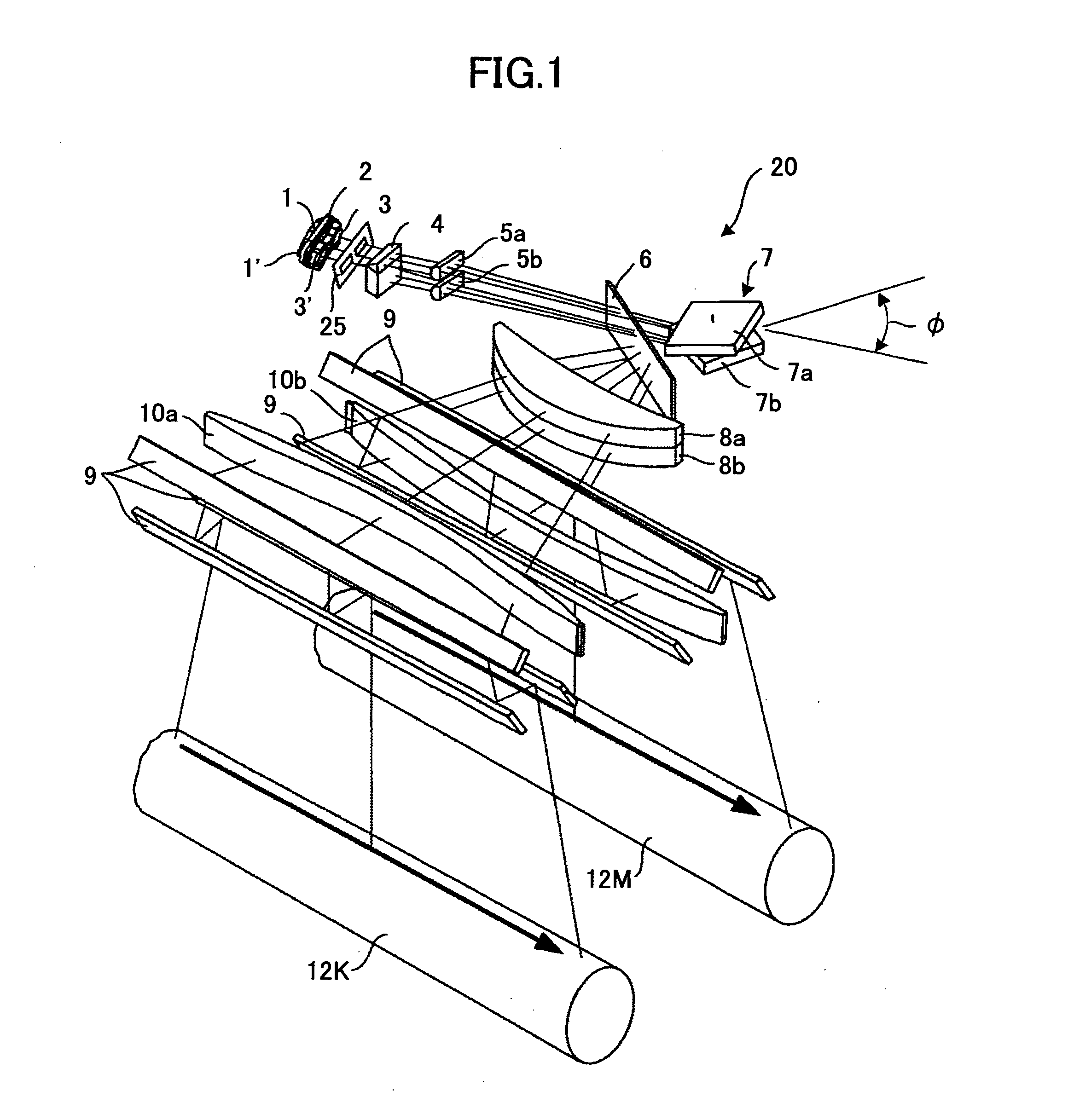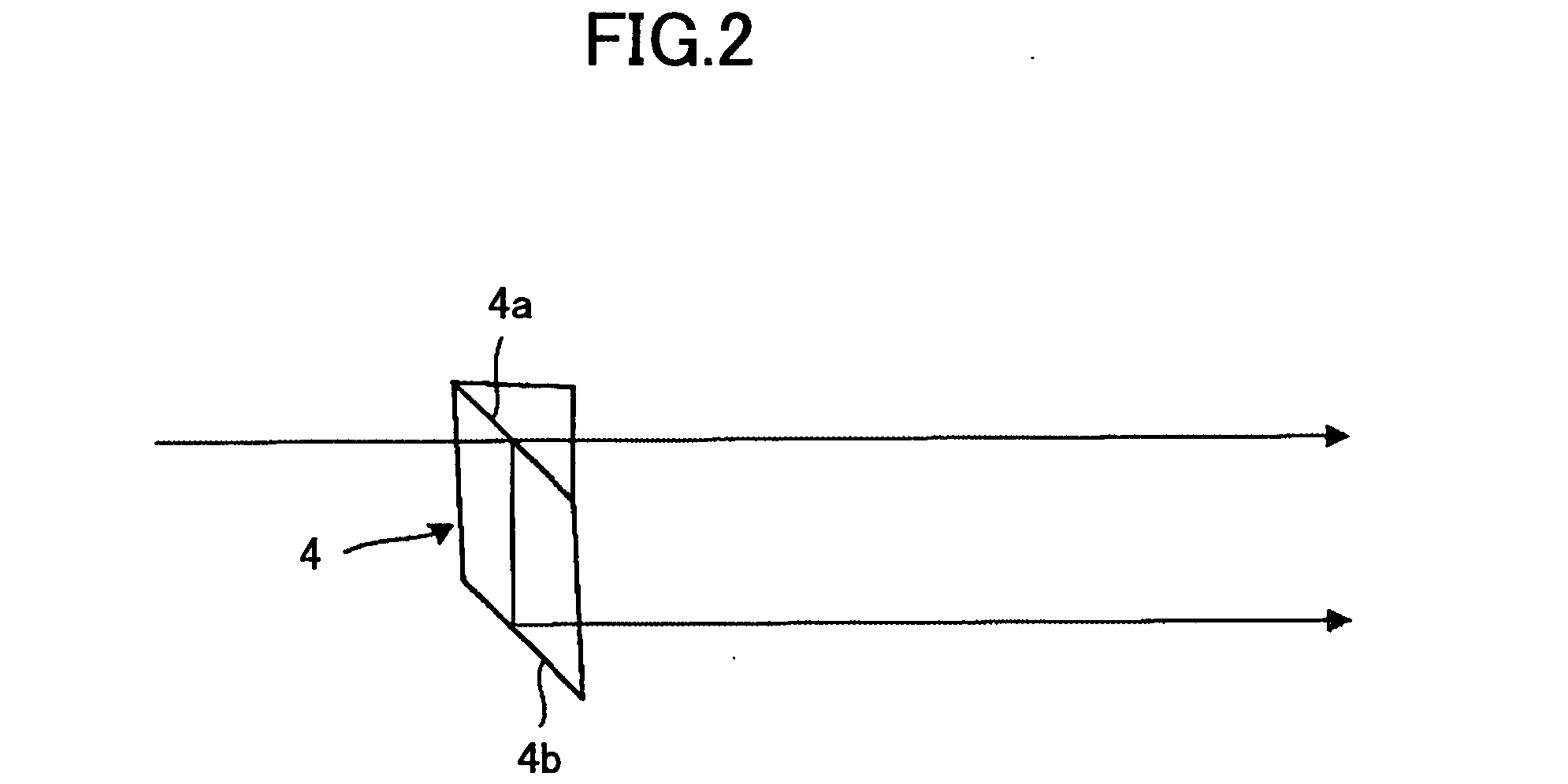Optical scanner and image forming apparatus
an image forming apparatus and optical scanner technology, applied in the field of optical scanners and image forming apparatuses, can solve the problems of increasing the number of components, reducing the productivity of the apparatus, and requiring more light sources for tandem type image forming apparatuses, so as to reduce the number of light sources, reduce color irregularities and color shifts without adversely affecting the image, and speed up the effect of speed
- Summary
- Abstract
- Description
- Claims
- Application Information
AI Technical Summary
Benefits of technology
Problems solved by technology
Method used
Image
Examples
first embodiment
[0055]FIG. 1 is a partially omitted perspective view of an optical scanner 20 according to the present invention.
[0056] First, a summary of the configuration and functions of the optical scanner 20 according to the first embodiment is described with reference to FIG. 1. In FIG. 1, reference numerals 1, 1′ denote semiconductor lasers functioning as light sources, 2 denotes a support base (LD base) of the semiconductor lasers, 3, 3′ denote coupling lenses, 4 denotes a half mirror prism functioning as a light flux dividing unit, 5a, 5b denote cylindrical lenses, 6 denotes a noise insulating glass, 7 denotes a deflecting unit including an upper polygon mirror 7a and a lower polygon mirror 7b functioning as reflection polygon mirrors, 8a, 8b denote first scanning lenses of an optical scanning system, 9 denotes mirrors in the optical scanning system, 10a, 10b denote second scanning lenses in the optical scanning system, 12K, 12M denote photoconductors that are subject to scanning, and 25 ...
third embodiment
[0191] A third embodiment according to the present invention is described with reference to FIG. 7 and FIG. 10.
[0192] The write start timing of an image is described in the present embodiment. When scanning a surface with an optical scanner, the write start timing of an image is determined on the basis of a light detection timing detected by a light detecting unit such as a photodiode provided at the starting side of optical scanning and outside the image forming area. Specifically, the write start timing is the timing of starting to write an image at a starting point of the image forming area after a light is detected by the light detecting unit.
[0193] Even if the write start timing is the same for different surfaces, the light beams pass through different optical systems before reaching the surfaces to be scanned. As a result, the surfaces have different write start positions, which may lead to color shifts in the resultant image. To compensate for the differences, it is necessar...
fourth embodiment
[0198] A fourth embodiment according to the present invention is described with reference to FIG. 7 and FIG. 11.
[0199] The clock frequency is described in the present embodiment. As described above, even if the same clock frequency is used for scanning a plurality of different surfaces, optical elements (scanning lens, optical path bending mirror, etc.) through which a light beam passes before reaching the surfaces are different among the surfaces. Therefore, images created on the different surfaces will have different total widths.
[0200] Moreover, the temperatures of scanning lenses (made of plastic) may differ in the environment where the image forming apparatus is used, and therefore, the scanning lenses may have different expansion coefficients. Accordingly, images created on the different surfaces will have different total widths.
[0201] The total width of an image can be corrected by changing the clock frequency of the light source. By switching the clock frequency of the lig...
PUM
 Login to View More
Login to View More Abstract
Description
Claims
Application Information
 Login to View More
Login to View More - R&D
- Intellectual Property
- Life Sciences
- Materials
- Tech Scout
- Unparalleled Data Quality
- Higher Quality Content
- 60% Fewer Hallucinations
Browse by: Latest US Patents, China's latest patents, Technical Efficacy Thesaurus, Application Domain, Technology Topic, Popular Technical Reports.
© 2025 PatSnap. All rights reserved.Legal|Privacy policy|Modern Slavery Act Transparency Statement|Sitemap|About US| Contact US: help@patsnap.com



